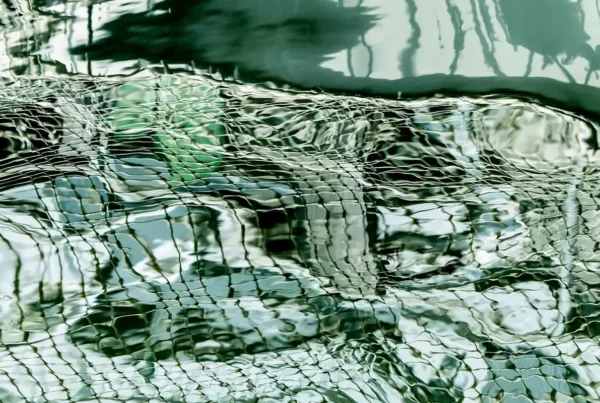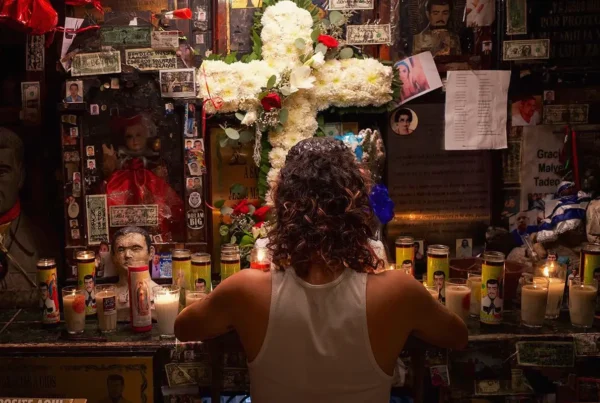Paperboyo: Reimagining the World with Paper and Perspective
Rich McCor, widely known as Paperboyo, has carved a distinct niche in the art world by combining photography and paper cutouts in a way that transforms the familiar into the fantastical. With a scalpel in hand and a keen eye for detail, McCor creates intricate paper silhouettes that interact with some of the world’s most iconic landmarks. His playful yet thoughtful approach has captivated hundreds of thousands on social media, allowing him to explore creative opportunities worldwide. Whether he’s collaborating with global celebrities or simply crafting a moment of whimsy out of an urban landscape, Paperboyo’s art invites viewers to see the world in a new light, one cutout at a time.
Growing up in the picturesque countryside of Kent, Rich McCor found his artistic spark during childhood visits to his great aunt in Aberdeen. Years later, those early memories would fuel his photographic journeys, allowing him to navigate the city streets with a sense of nostalgia and familiarity. However, McCor’s real artistic journey began during his school years, where a particularly engaging art teacher encouraged him to explore his creative potential. This foundational experience stayed with him, leading him to experiment with various artistic mediums, ultimately landing on paper cutouts as his signature style.
Though McCor’s work feels like it was destined to be from the start, his path to becoming Paperboyo wasn’t a direct one. Before embracing art full-time, he worked in creative roles, including time spent at the BBC’s in-house team, where he honed his ability to accept feedback and refine his work. This early career in media helped shape his collaborative nature, leading to high-profile partnerships with stars like Will Smith and even the cast of Game of Thrones. His passion for Formula One also found its way into his photography, allowing him to fuse his interests seamlessly into his creative process.

Transforming Landmarks: The Power of Paper
One of the key elements that makes McCor’s work stand out is his ability to breathe new life into well-known landmarks through his meticulously crafted paper cutouts. His process often starts by spotting an interesting feature in the architecture or landscape and envisioning a playful twist. For instance, he once transformed London’s iconic Tower Bridge into a thrilling rollercoaster, spending hours perfecting the design and making several attempts to achieve the desired effect. This dedication to precision and the sheer delight that his finished pieces evoke are central to his art’s appeal.
Each cutout, though often small and simple, holds the power to completely alter a viewer’s perception of a place. Whether turning the Arc de Triomphe into a LEGO figure or transforming the facade of King’s Place into swimming lanes, McCor’s creations are a reminder that the world can be reshaped through creativity and imagination. His projects require extensive planning and scouting, as he travels across the globe in search of the perfect backdrops. Locations such as Singapore, Hong Kong, and Brazil have all served as muses, with their dynamic landscapes providing rich opportunities for his art. However, McCor has a particular affinity for Asia, drawn to its unpredictable and vibrant cityscapes.

Paperboyo: Crafting an Unconventional Career
For McCor, a typical day is far from routine. His lifestyle involves constant travel, whether skiing in the French Alps or walking the sandy shores of Brazil, all while maintaining a rigorous creative schedule. Despite the seemingly glamorous nature of his work, he emphasizes the pressure to stay innovative and relevant. The need to continuously generate fresh ideas and surprise his audience drives his creative output, pushing him to view the world through a unique lens. He credits this mindset for his ability to constantly spot shapes and patterns in everyday surroundings, transforming them into new works of art.
Though he has achieved considerable success, McCor admits to the challenges that come with his career. From travel mishaps, such as canceled flights and lost luggage, to the disappointment of arriving at a location only to find it obstructed by scaffolding, he has faced his fair share of setbacks. Yet, the biggest challenge remains the constant pursuit of originality. As he puts it, the fear of running out of ideas is ever-present, but it’s also a driving force. The joy of creating something fresh keeps him engaged, whether he’s meticulously working on a cutout or photographing his latest creation.

Paperboyo: Embracing Curiosity and Playfulness
One of McCor’s most compelling traits as an artist is his ability to look at the world with a sense of wonder. Whether he’s exploring famous landmarks or simply observing patterns in a city’s architecture, his art is rooted in a deep curiosity. This curiosity is what led him to experiment with perspective and paper cutouts in the first place, after he realized he couldn’t emulate the professional photographers he admired in London. Instead of giving up, McCor asked himself how he could capture the city differently, which eventually led to his unique photographic style.
Curiosity also fuels McCor’s collaborations. He draws inspiration from artists like Christoph Niemann and video editor Ari Fararooy, marveling at their innovative approaches to transforming the mundane. He’s eager to push the boundaries of his own work, whether by exploring large-scale building transformations or developing new digital projects like apps. For him, the key to staying creatively fulfilled is to maintain a constant sense of discovery, both in his personal life and his artistic practice. It’s this philosophy that makes Paperboyo’s work so captivating—each new piece is not only an image but an invitation to view the world differently.
McCor’s playful attitude towards art extends beyond his work to the memorable interactions he has had with his audience. Whether it’s eliciting smiles from passersby or creating serendipitous connections, such as meeting someone in a hostel who appeared in one of his old photos, McCor’s experiences are as varied and unexpected as his art. In both his personal encounters and his creative process, he consistently proves that curiosity and a sense of humor can transform even the most ordinary moments into extraordinary experiences.






